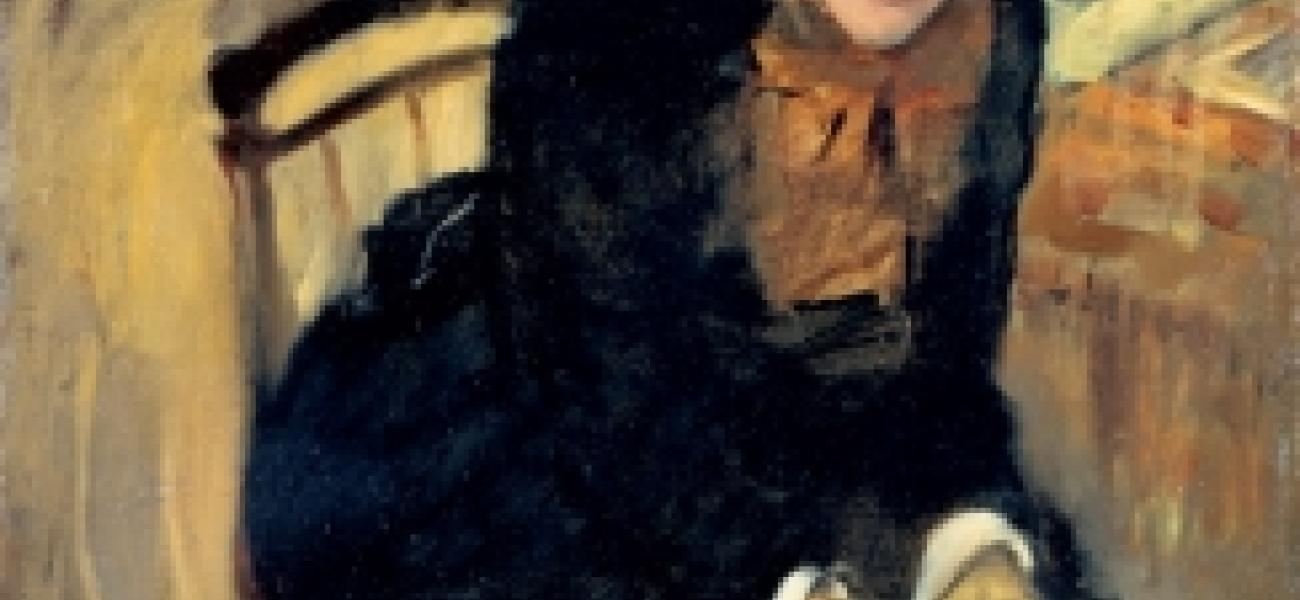The National Gallery of Art uncovers the true relationship between impressionists Mary Cassatt and Edgar Degas (and it wasn’t romantic)

Featured on washingtonpost.com
When the National Gallery of Art underwent renovations a few years ago, curator Kimberly Jones took down a painting by Mary Cassatt. The 1878 masterpiece, “Little Girl in a Blue Armchair,” was looking “a little dingy,” Jones recalls. After some preliminary tests, conservators removed a layer of yellowing varnish, and the painting came alive.
“We uncovered the most glorious, sumptuous paint surface you can imagine. It’s absolutely spectacular, rich and lush and vibrant,” Jones says. “Before, you couldn’t really appreciate the richness of the texture and the variety of the paint strokes.”
Something curious also came to light: A small patch of brush strokes that didn’t look like the American impressionist’s handiwork at all.
“There are these little horizontal strokes of greyish paint, and you don’t see anything like that in the rest of the painting, but you do see it in Degas,” Jones says.
Art historians have long known that Cassatt and French impressionist Edgar Degas worked closely together in Paris, and many thought their relationship was one of mentor and student — due, in part, to the fact that Degas was 10 years older than Cassatt. The new NGA exhibit “Degas/Cassatt” shows that they were actually colleagues, pushing each other to reach greater artistic heights, Jones says.
Degas’ work on “Little Girl in a Blue Armchair” is an excellent case in point, Jones says.
Cassatt said in a letter circa 1903 that Degas helped with the painting, but what he specifically did, no one knew. Infrared analysis shows that Cassatt originally painted the scene with a single wall in the back. Degas (presumably) turned part of that wall into a corner, adding depth. This small change may have helped Cassatt transform a pretty good painting into a great one, Jones says.
“What Degas did was very discrete, very subtle, and then he left it to her to resolve,” Jones says.
Cassatt had to make adjustments to accommodate the wall’s new angle. She ended up with a more-dynamic arrangement that enhanced her bold statement about childhood. At a time when most painters depicted children as living dolls, Cassatt captured a little girl in glorious, disheveled reality.
Inspiration ran both ways. In “Woman Standing Holding a Fan” (1878-1879), Cassatt employed metallic and matte paint at a time when respectable artists exclusively worked in oil. Degas responded by using metallic paint and three different kinds of matte mediums in “Portrait After a Costume Ball” (1879).
“They are doing a little one-upmanship on each other,” Jones says. “I think that is the fun part about the relationship.”
The two sharp-tongued artists had their differences and occasional falling-outs, Jones says, but their mutual respect and admiration always won out in the end.
Click here to read the full article.